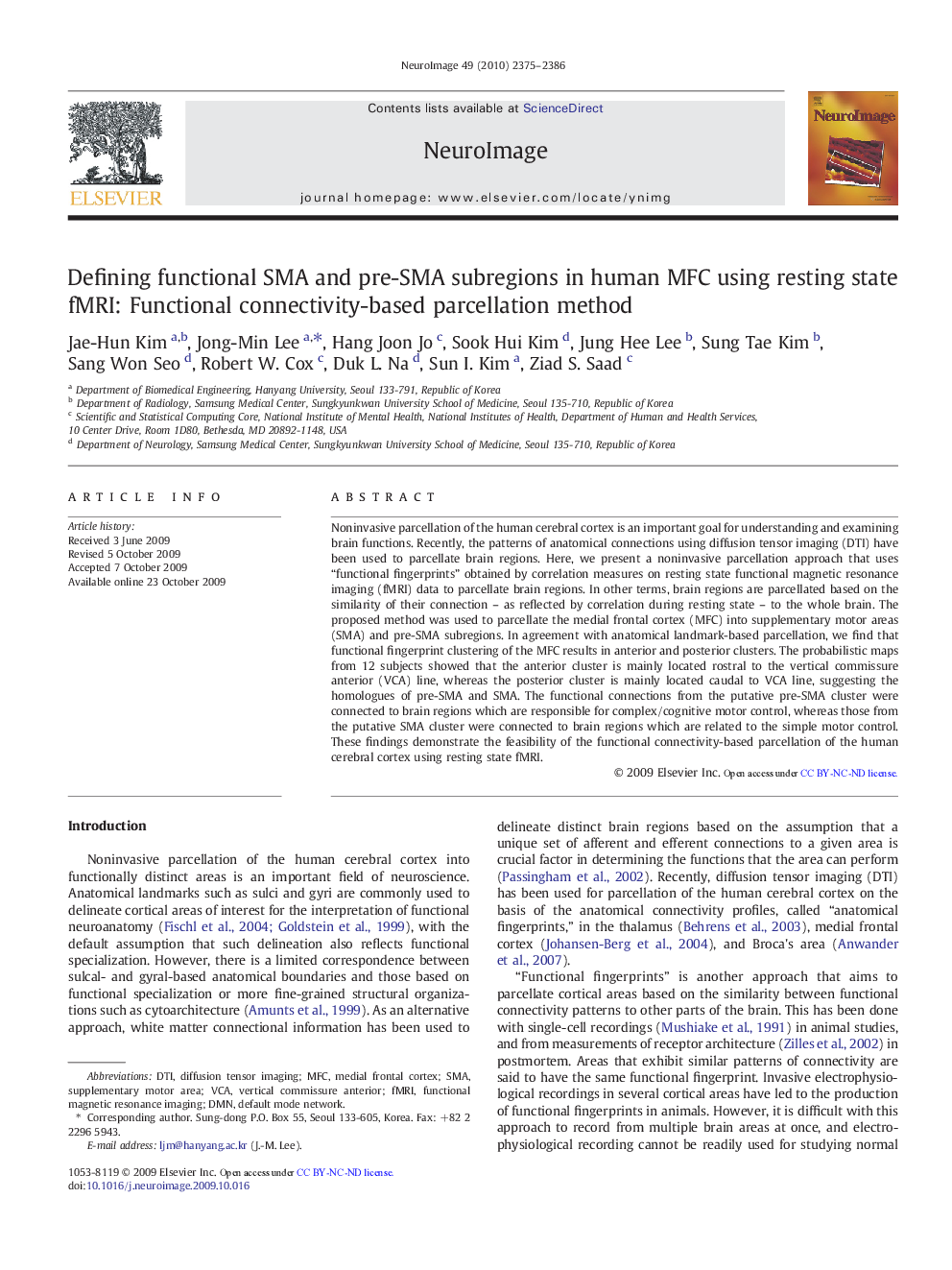| کد مقاله | کد نشریه | سال انتشار | مقاله انگلیسی | نسخه تمام متن |
|---|---|---|---|---|
| 6037058 | 1188783 | 2010 | 12 صفحه PDF | دانلود رایگان |

Noninvasive parcellation of the human cerebral cortex is an important goal for understanding and examining brain functions. Recently, the patterns of anatomical connections using diffusion tensor imaging (DTI) have been used to parcellate brain regions. Here, we present a noninvasive parcellation approach that uses “functional fingerprints” obtained by correlation measures on resting state functional magnetic resonance imaging (fMRI) data to parcellate brain regions. In other terms, brain regions are parcellated based on the similarity of their connection - as reflected by correlation during resting state - to the whole brain. The proposed method was used to parcellate the medial frontal cortex (MFC) into supplementary motor areas (SMA) and pre-SMA subregions. In agreement with anatomical landmark-based parcellation, we find that functional fingerprint clustering of the MFC results in anterior and posterior clusters. The probabilistic maps from 12 subjects showed that the anterior cluster is mainly located rostral to the vertical commissure anterior (VCA) line, whereas the posterior cluster is mainly located caudal to VCA line, suggesting the homologues of pre-SMA and SMA. The functional connections from the putative pre-SMA cluster were connected to brain regions which are responsible for complex/cognitive motor control, whereas those from the putative SMA cluster were connected to brain regions which are related to the simple motor control. These findings demonstrate the feasibility of the functional connectivity-based parcellation of the human cerebral cortex using resting state fMRI.
Journal: NeuroImage - Volume 49, Issue 3, 1 February 2010, Pages 2375-2386